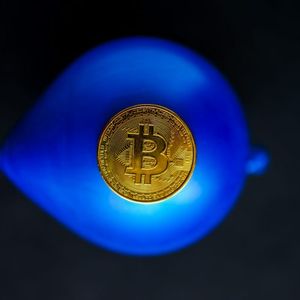DePINs are transforming telecommunications by introducing decentralized, community-powered networks. These innovative systems tackle the biggest flaws in traditional telecom, making connectivity more accessible and reliable. The technology is also expanding into sectors like AI, gaming , and supply chains. The telecom sector faces constant challenges, from expensive infrastructure upgrades to inconsistent coverage in remote areas. As a result, consumers are looking for better alternatives that guarantee fair access to the internet. Decentralized Physical Infrastructure Networks (DePINs) offer a solution to the issues linked to traditional telecom companies. Experts from Huddle01, Impossible Cloud Network, and Aethir have shared insights on how these blockchain-based networks break down barriers to connectivity. Traditional telecom networks have long relied on massive infrastructure projects requiring substantial funding. Because of this, governments and large corporations typically dominate the industry. DePINs are flipping this model by decentralizing control. Using distributed ledgers and token-based incentives, they allow community members to contribute and maintain a shared network. Service providers receive digital tokens as rewards for keeping networks operational. Smart contracts automate the entire process, ensuring seamless connectivity, secure transactions, and efficient network management. “ DePINs reimagine telecom infrastructure by embracing decentralization and community participation. Instead of relying on a single provider, they use a distributed network of contributors, making it easier to scale. They’re also more cost-effective, using underutilized resources like excess bandwidth and storage,” explained Ayush Ranjan, CEO at Huddle01. The demand for decentralized networks is growing rapidly. Recent reports indicate that DePIN revenue skyrocketed to over $500 million in 2024—a staggering 100-fold increase from two years prior. The number of active DePIN projects has nearly doubled, with these networks now representing a significant share of the overall crypto market. More than 13 million devices globally support DePIN operations each day. Industry leaders predict this trend will only accelerate. “This model gives DePINs the potential to surpass centralized networks run by tech giants like Google , Microsoft, and Facebook by hundreds, if not thousands, of times in the next 15 years. It might not be as flashy as meme coin trading, but it’s fundamentally changing the game,” said Kai Wawrzinek, CEO of Impossible Cloud Network. Today, DePINs collectively hold a market capitalization exceeding $23 billion, with daily trading volumes surpassing $2 billion. Leading projects in this space include Bittensor, Render, Filecoin, Theta Network, and The Graph. The push for decentralized telecom reflects a growing need for fairer and more inclusive internet access. Traditional telecom models often favor urban centers, leaving rural regions underserved. This became evident during the pandemic when students in remote areas struggled with online learning due to poor connectivity. Large telecom providers also tend to concentrate control, setting high service prices and limiting competition. Expanding coverage to less populated areas requires massive investment, making these locations less attractive for traditional providers. “Centralized telecom providers prioritize urban areas, leaving rural regions behind. Their business model focuses on profitability rather than universal service, which leads to major gaps in access,” noted Kyle Okatomo, CTO at Aethir. In addition to coverage limitations, security risks are a major concern in traditional telecom models. “Centralized data storage creates a single point of failure. This makes them prime targets for cyberattacks. Just think about the AT&T breach last year, which exposed sensitive information of 73 million customers,” Wawrzinek pointed out. Given these flaws, DePIN networks are gaining traction as a more efficient and secure alternative. Wawrzinek believes that DePINs represent a fundamental shift in ownership and control. “The goal is simple: take power away from a centralized entity and hand it back to the community.” By allowing users to create and manage their own networks, DePINs make internet access more decentralized. Instead of relying on large corporations, individuals can set up small, local connectivity hubs. Users pay for the bandwidth they consume, while those who contribute to the network receive compensation in return. A recent study highlighted how projects like Helium Mobile, DAWN, and WiFi Map are using token-based models to make connectivity more efficient. Helium allows users to operate decentralized wireless nodes, DAWN enables individuals to act as internet service providers, and WiFi Map rewards global WiFi sharing. “These models encourage active participation from both service providers and consumers. Instead of paying upfront for ownership, people earn ownership through contributions,” Ranjan explained. However, achieving mainstream adoption will require policy coordination and regulatory clarity. As DePINs continue to expand, they are gaining recognition from institutions. Harvard Business School recently added DePIN strategies to its curriculum, further legitimizing the concept. Regulatory uncertainty remains a challenge, though. Some governments and regulators remain skeptical of DePINs due to their association with cryptocurrencies. One example is the recent lawsuit against Nova Labs, the company behind the Helium Network. U.S. regulators accused the firm of misleading investors and violating securities laws. “Regulation is necessary for DePINs, but it has to be well thought out. Instead of blanket lawsuits, authorities need to engage in open discussions to understand these networks. We need clear guidelines around tokenomics, privacy, and infrastructure deployment—but we don’t need endless legal battles that slow down innovation,” Wawrzinek emphasized. Beyond regulation, improving public awareness and education is key to driving adoption. Many people still struggle to understand how DePINs work, making onboarding difficult. “The technical aspects of DePINs can be intimidating for newcomers. If we want mainstream adoption, we need to simplify the process,” Ranjan noted. Scalability is another concern. As these networks grow, they need to maintain efficiency and prevent congestion. Some projects are already addressing this by using advanced blockchain solutions like Layer-3 technology to enhance performance. Despite these hurdles, DePINs hold vast potential. Their decentralized approach is not limited to telecom; it is also being adopted in energy grids, supply chains, and AI infrastructure. Some developers are integrating AI to optimize efficiency, while others are applying the model to gaming, marketing, and retail industries. “ DePINs have the power to replace centralized systems and make them more efficient. They’re already disrupting telecom, but the impact extends far beyond that. If interoperability improves, DePINs could revolutionize multiple industries. Instead of benefiting corporations, individuals will reap the rewards. It’s time for big tech to adapt,” Wawrzinek concluded. If DePINs can navigate their current challenges, they may usher in a new era of decentralized infrastructure, reshaping industries worldwide.
















